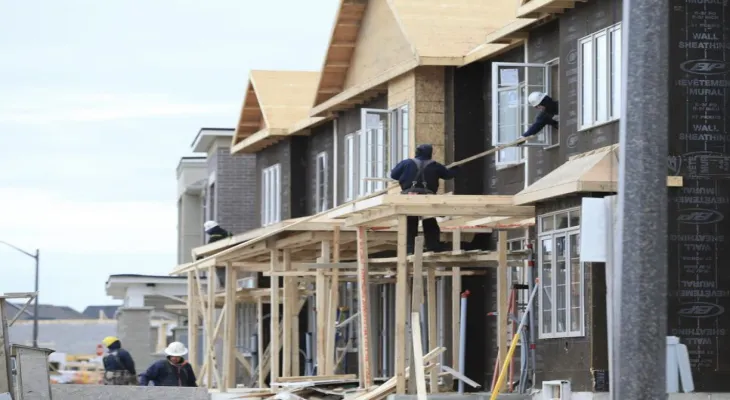Search here
Newspaper
Search here

Arab Canada News
News

Published: May 4, 2022
Despite the increase in residential construction last year, Toronto and other major urban centers are not keeping up with population growth, according to a new report by the Canadian National Housing Agency.
It has been shown in the report issued by the Canadian Housing Agency that residential construction in six major urban areas increased last year compared to the previous year, with Toronto witnessing the second-lowest percentage increase.
This first report on housing supply from CMHC indicates that while Calgary saw a significant increase in housing starts for all types – detached, semi-detached, townhouses, apartments, and rental housing units – from 2020 to last year, with a 63 percent increase (or 15,017 more units), Toronto saw only a 9 percent increase in starts (41,898 units) during the same period.
Although the total number of starts in Toronto was the highest among the six CMAs, it recorded the second-lowest percentage increase.
Only Ottawa was lower, with an increase of 2.7 percent (10,221 units) during the period.
Toronto’s 9 percent increase was tied with Edmonton, which saw the construction of an additional 12,546 units.
The report, released Tuesday afternoon, says that "rising prices, declining supply, and strong housing demand, supported by low interest rates, provided confidence to developers and homebuilders to proceed with new projects" between last year and the previous year.
Calgary's huge jump in housing starts was driven by the construction of new detached single-family homes (5,512) between 2020 and last year, an increase of 59 percent, and 6,314 housing units during the same period, a huge increase of 90 percent.
On the other hand, the report indicates that Toronto saw the construction of 6,920 new detached homes during the same time, but this was a modest jump of 18 percent, while apartments increased by 30,237 units, just an 8 percent increase in the city.
Also, Vancouver was the only one among the six CMAs that saw a decrease (-2 percent) in detached home construction, with only 3,015 homes built during this period, a "continuing trend."
The report also pointed out that this has been happening over the past decade due to rising land values, making detached home construction "largely uneconomical."
Overall, the report concluded that housing construction has not kept pace with population demands.
In an interview, Christopher Zacher, senior analyst at CMHC, argued that the number of homes built is trending upward but adjusted for population, it has been trending downward since the early 2000s.
He added, "When you look at unemployment generally in Canada, you find the number is low (5.8 percent) but there is a shortage of skilled trades (for construction), as we do not have a large labor force that can be utilized," suggesting that adding this needs to be addressed if more housing is to be built in Canada.
He also noted that the housing development approval process needs to be simplified, pointing out that this is a key pillar of the federal government's new $4 billion Housing Accelerator Fund.
The new housing report also looks at the number of homes created annually per 10,000 population from 2003 to 2021 according to the latest figures, where Toronto recorded the lowest annual housing starts per 10,000 people last year at 56, representing (a decrease from 86 per 10,000 in 2003) while Vancouver recorded the highest rate at 93 in 2021, representing (an increase from 63 per 10,000 in 2003).
Ottawa ranked second with 84 starts per 10,000 last year, representing (an increase from 80 in 2003).
Calgary and Edmonton tied for third with 78, representing (a decrease from 129 and 100 per 10,000 in 2003), and Montreal last at 65, representing (an increase from 53 per 10,000).
According to StatsCan, between 2003 and 2021, the population of the Toronto CMA jumped from 5 million to 6.6 million, Montreal’s population increased from 3.7 million to 4.3 million, and Vancouver from 2 million to 2.8 million.
Both Alberta CMAs, Calgary and Edmonton, had a million population in 2003 which jumped to 1.6 million and 1.5 million respectively in 2021, while Ottawa increased during that time from 878,000 to 1.1 million.
Comments